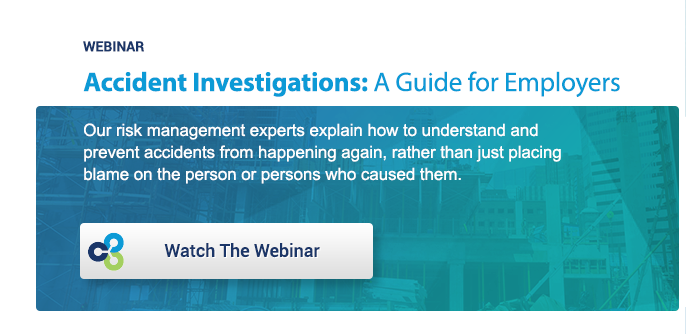Workers' comp insurance rates are calculated according to the specific type of work employees perform along with the rate assigned to those employee classifications. But when it comes to obtaining workers’ compensation insurance, some employers don’t know where to start.
Most states require business owners with a certain number of employees to have a workers’ comp policy, but many employers don’t understand how workers’ comp rates are determined. In order to help understand how workers' compensation rates are actually determined, you must first consider the following:
- Type of business
- Previous workers’ compensation claim history
- Size of the company payroll
What most business owners don’t realize is that underwriters focus heavily on a company’s previous loss history to determine what is known in the industry as an experience modification rate (EMR).
The Mod Factor
The experience modification rate is a key factor for how workers' comp rates are determined. The modification rate, or Mod, is a rate applied to the workers' compensation premium. It’s comprised of a complicated calculation based on:
- Payroll by job class
- Three years of prior policy loss data
- Rates established by the National Council on Compensation Insurance
The industry average is a 1.0. If you are below that, you are doing better than the rest of your industry and if you are over that, you are doing worse than the average business in your industry.
The bad news is your rate is based on the previous three years of losses, so one bad claim can haunt you for the next three years. The good news? The rate calculation typically rewards businesses with good safety practices by reducing the workers' comp premium and this also will stick with you for three years.
How Can I Save?
Many business owners don’t know the Mod recognizes and measures both the frequency and the severity of losses. As a part of the rating formula, the rating gives greater weight to accident frequency (number of claims) than to accident severity (cost of claims). That means even if the claims are small, having a high number of them can hurt your rate.
When reviewing options for workers’ compensation coverage, a combination of safety programs and carrier selection can make a huge difference in cost. Here are a few examples of ways your insurance carrier can provide you with the tools to save you money on workers’ comp:
- Performing safety audits
- Making safety training available
- Creating a safe work environment
- Enforcing safety rules
- Implementing a drug free workplace
Consider a PEO
Another way to save money is to consider collaborating with a professional employer organization. A PEO is able to offer group rates, even for very small businesses. This is due in part to the fact that PEOs offer risk management and safety resources for businesses that are too small or otherwise ill-equipped to implement a strong risk management program. In some cases, PEOs are willing to offer discounts to startup businesses, even though they have no loss history.
At FrankCrum, we have our very own insurance carrier: Frank Winston Crum Insurance. The direct connection allows clients to take advantage of savings, which are usually only available to those who qualify for larger group rates. Additionally, our unique pay-as-you-go program enables clients to spread payments out over a calendar year and avoid a large down payment.
Ultimately, workers’ compensation insurance is an investment in the future of your business. It’s also a way to make sure your employees receive the medical care and benefits they need to get back on their feet and back to work.





